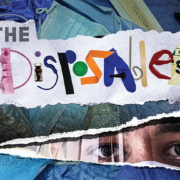Health technology: today and beyond
Health technology: today and beyond
By Ken Winell
Two years of a worldwide pandemic. An endless amount of impact. Business models across all industries were stretched, accommodated, and changed forever. None more so than health and wellness. Within health and wellness, telehealth was one of the areas that saw the most change.
The Good News
The pandemic forced us to rethink how to connect providers to patients to avoid the potential virus exposure that came with in-person visits. This radical new approach has positively impacted the future of medicine. Barriers were broken by the federal government, insurance companies, and the providers themselves. The loosening of federal mandates allowed practitioners to treat beyond state lines. Insurers adopted and standardized telehealth platforms into their operational models (i.e. Cigna, Aetna). And, most importantly, many providers who were resistant before the pandemic reversed their position and signed up to practice “virtual visits.”
As a result of these changes, new health care related technology was rapidly adopted by both patients and healthcare systems. Telehealth apps were downloaded at a record-setting pace from March 2020 thru December 2020. Electronic health record (EHR) systems, such as Epic and Mychart, integrated telehealth tools to facilitate and encourage adoption.
The added benefit of improved telehealth technology was more data to collect and more sophisticated ways to analyze it. Machine learning and artificial intelligence started to be employed and various stakeholders were able to be more accurate in their models. For example, predictive analytics were used to guide the treatment of chronic illnesses, supply levels management was based on patient prescriptions, and the underlying telehealth platforms themselves were delivering pertinent information more efficiently and faster.
Post COVID-19 Lockdowns 2021 & 2022
As COVID-19 vaccines and boosters made their way through countries, we saw a relaxing of strict lockdowns and social distancing began to fade. The impact on telehealth was a significant decrease in growth (new subscribers) and a plateau was reached with existing/previous telehealth users. Many healthcare professionals opted out to return to in-office visits.
Mental health treatment was the exception and didn’t go back to pre-lockdown norms. Companies such as Ginger, Lemonaid, and others continue to experience double-digit growth. This is ironic because this new approach is the antithesis of the hallmark of mental health therapy. The traditional face-to-face patient and therapist relationship has been transformed due to the benefits of telehealth meetings outweighing those of live meetings for both providers and patients: easier access for patients, less office overhead, and saving time/money on commutes.
What’s Ahead
Looking ahead, we anticipate the consolidation of telehealth companies due to fewer user adoptions, by both patients and providers, increased financial pressures, and a slowdown of payer integration into their existing telemed platforms (Cigna, United Health, etc.).
However, the mental health space will continue to expand with new services and companies. This includes new digital therapeutics that will be launched over the next 12 to 24 months. The driver of this expansion is the adoption of employers that will be adding mental health services as a basic benefit.
Data collection and management will be monetizable for companies as learnings, and there will be an expansion in privacy controls and legislation to protect as well. Patients want and will want to control the ability to share their data so it will be essential that the collection platforms are self-contained, can transport information, and have lock-safe security.
In summary, telehealth is here to stay. While we will see some downward cycles of consolidation and adoption, it will level off and start the upward cycle within the next 24 months.
| Ken Winell is executive director, consulting, for Greater Than One, a full-experience marketing agency focused on healthcare. His focus on the latest technologies such as artificial intelligence, augmented and virtual reality, and other applications for healthcare help Greater Than One remain innovative and ahead of the curve. |












